#Cooked Foods
Explore tagged Tumblr posts
Text
71K notes
·
View notes
Text
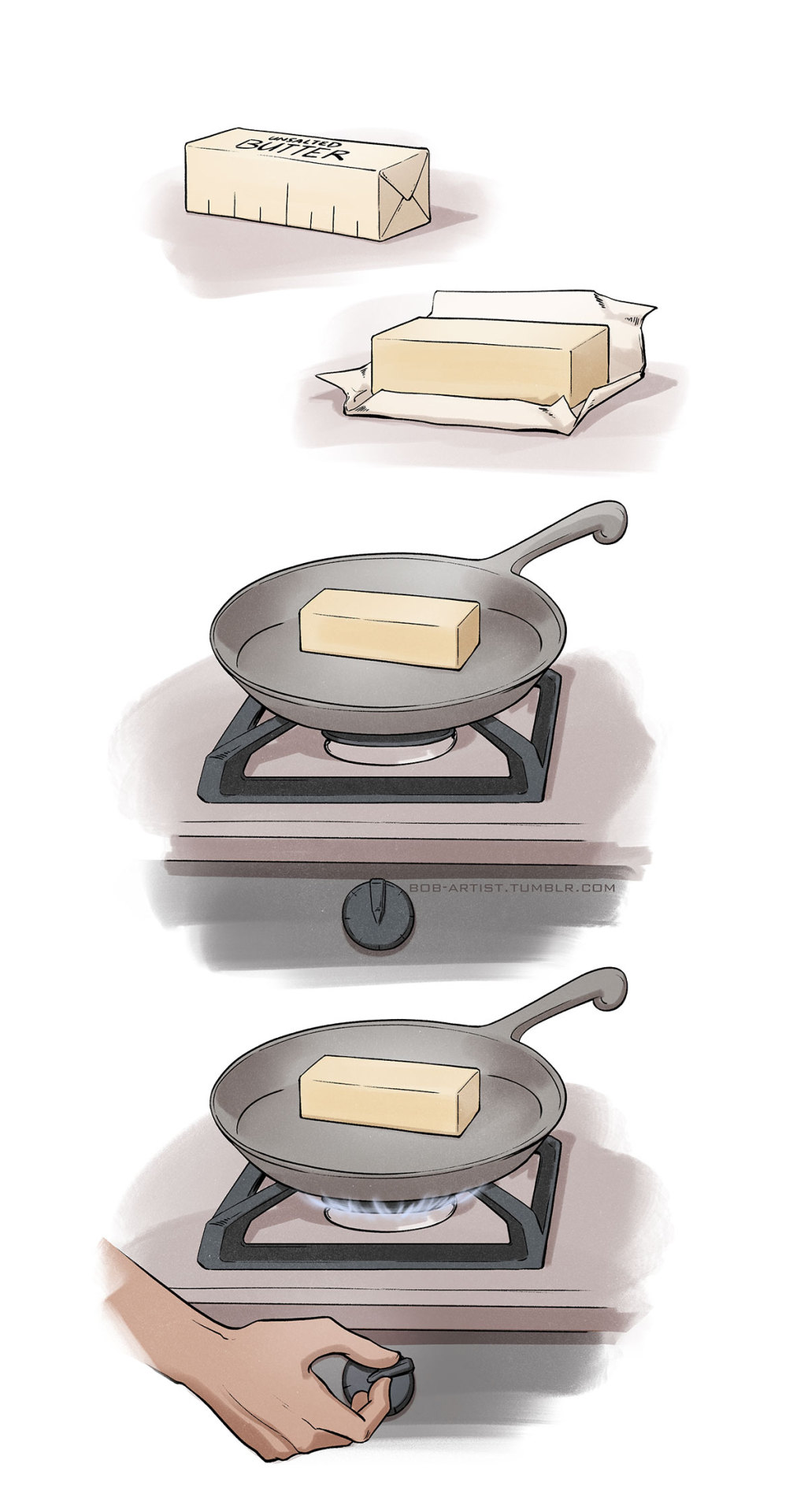
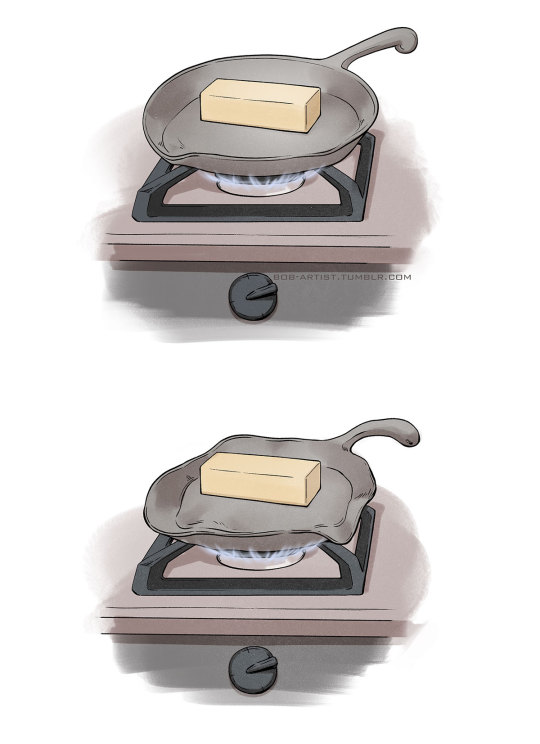
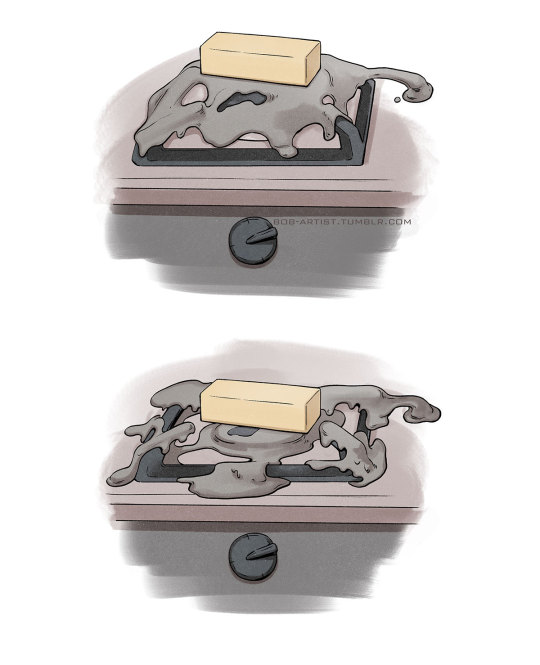
I had an upsetting dream last night.
#artists on tumblr#misc comics#comics#minicomic#minicomics#my random art#dreams#butter#cooking#food art#comic#this is what happens when you don't cut the butter into smaller pieces
57K notes
·
View notes
Text
"Isn't it weird that [thing humans commonly eat] is poisonous to literally every domesticated animal" I mean, there's a pretty good chance that [thing humans commonly eat] is at least mildly poisonous to humans, too. One of our quirks as a species is that we think our food is bland if it doesn't have enough poison in it.
187K notes
·
View notes
Text

i had to make a solution for this for myself, mostly because of depression, but it makes a nice How To for folks who are low on spoons or could use some help in the kitchen.
Fortunately i was a professional cook for over a decade. UNfortunately the first post i made explaining it was suuuuper long. Let's see if i can do better
So you select any protein that you can cook in a frying pan -- chicken breasts, ground beef, pork chops, sausages, steak, chicken thighs, whatever. You also select one or two types of veggie (mushrooms or tubers also work, i just did this with potatoes and carrots for dinner tonight).
[i like cooking for vegetarians, but this is how i cook for myself when i'm low on spoons - perhaps i'll do another post for meatless meals]
You'll also need some kind of oil, and a sauce or two of your choice in a bottle. All cooking gear is a large frying pan with lid (i prefer non-stick) a spatula, a cutting board, and a knife.
You cut the veggies into bite size pieces, cut up enough for two meals. One kind of veggie is fine, or you can do mix two or three

Put frying pan on medium heat with a little oil. Tubers or mushrooms or go in the pan a few minutes before the protein. 2 portions of the protein goes in the pan, about 5 minutes with lid (don't worry you can still get a good sear on both sides)
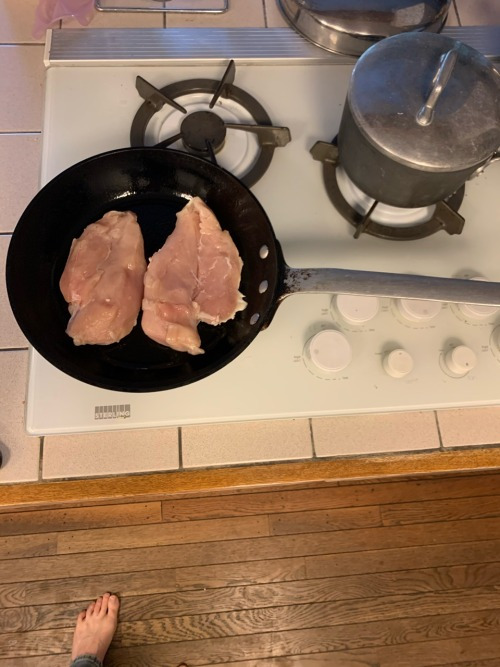
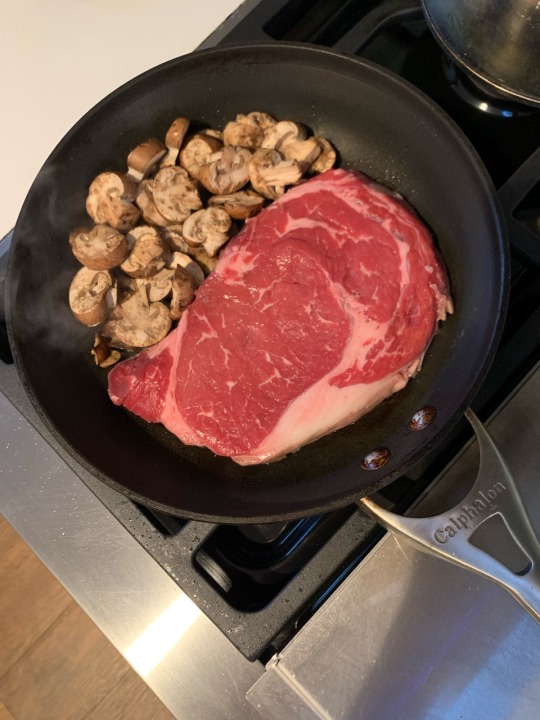
Now flip your protein if it's flip-able and add normal veggies, put the lid back on another five-ish minutes.
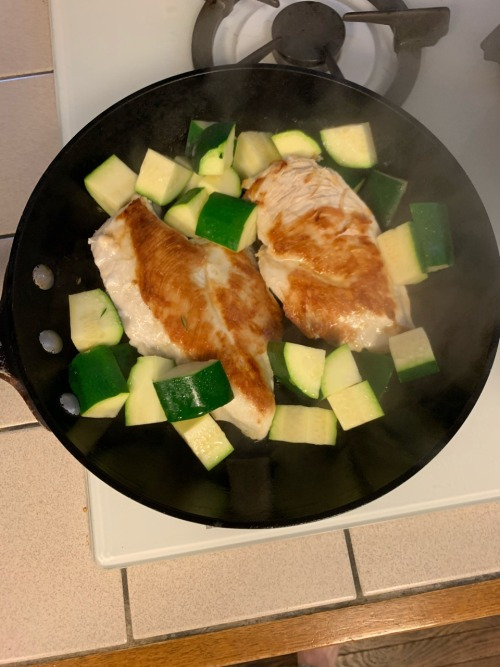
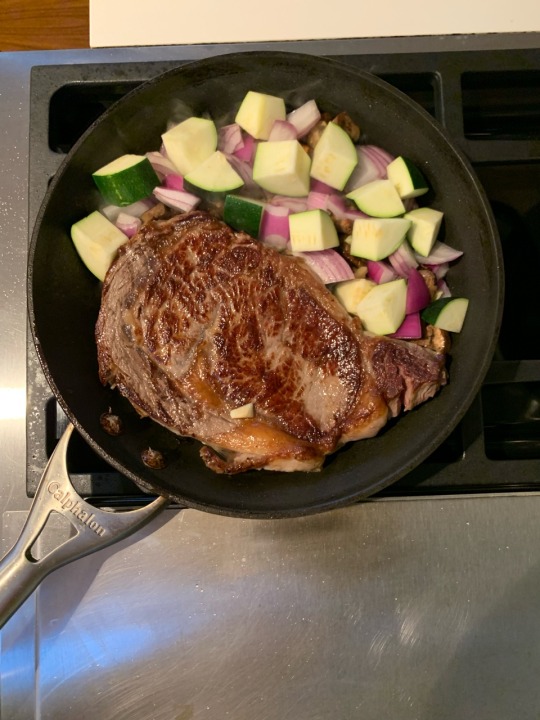
Take your protein out and put it with one portion of the veggies in a microwave safe container. That's going to be your lunch tomorrow. Put the other portion of protein on a plate to rest (you have to let a cooked protein sit a couple minutes before you serve it or when you cut into it all the juices run out and it goes dry - the liquids thicken as it cools, preventing this drying out if you let it rest, the goal is to serve it very warm but not hot hot)
While it's resting, pour some sauce from your bottle in the pan with the rest of the veggies and turn up the heat. A single sauce/bottle is fine, i like to get fancy and mix a couple. Two examples of personal favorite mixes are 1: bbq sauce and a hot sauce like sriracha 2: roughly equal parts low sodium soy sauce and worcestershire (makes something similar to a teriyaki sauce) A swallow of wine is almost always a great option if you want to add that to your sauce too, just add it to the pan before the other sauces so the alcohol has time to burn off.
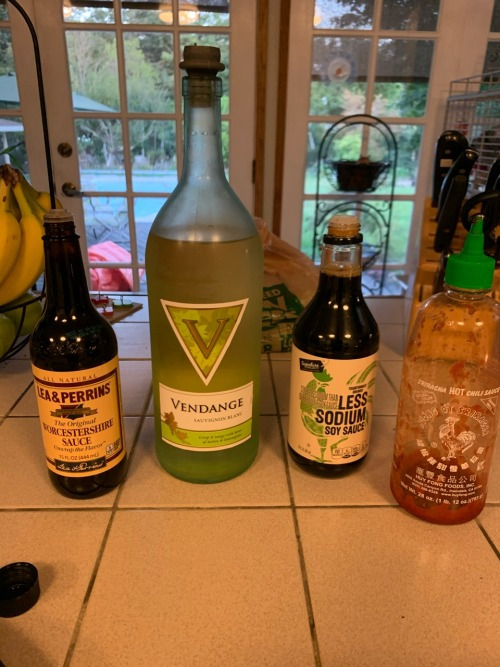
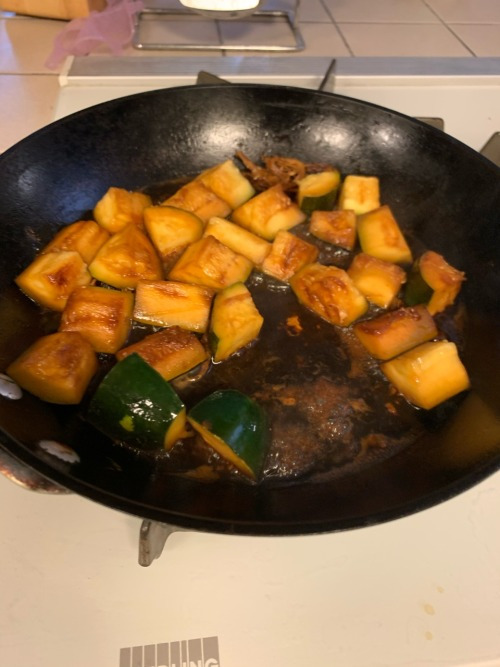
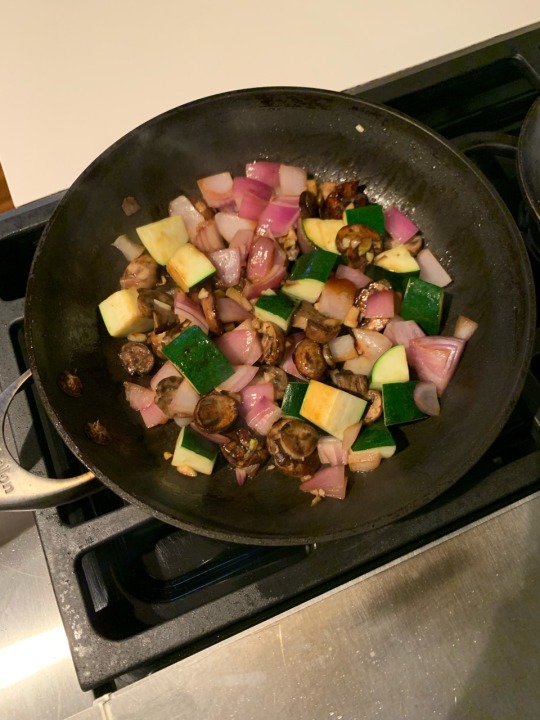
...
Here is the important bit. While your veggies are finishing, wash your cutting board and chef knife. Then when you dump your veggies and sauce over your protein on the plate, while it is still too hot to eat, you wash your frying pan and spatula before you eat. Now the only dishes you have left to do are your plate and fork. Maybe a steak knife.
...
The whole thing takes about 35 minutes even with washing the dishes, and that includes your lunch for the next day- just pour a different sauce on and stick it in the microwave for a couple minutes (or five minutes back in the frying pan) and you have a full healthy lunch with a different flavor
You can use this technique every single meal and it yields hundreds of combinations, from pork and potatoes bbq, to salmon and broccoli teriyaki, to chicken and zucchini in a soy glaze.
It will keep you down to less than an hour of kitchen time per day total for both lunch and dinner including all dish clean up, uses the least dishes, the least effort, requires the least technique, and is, depending on what you pick out, very affordable
here are a couple more examples from this month; i didn’t take pictures of the salmon i did recently, but you get the idea
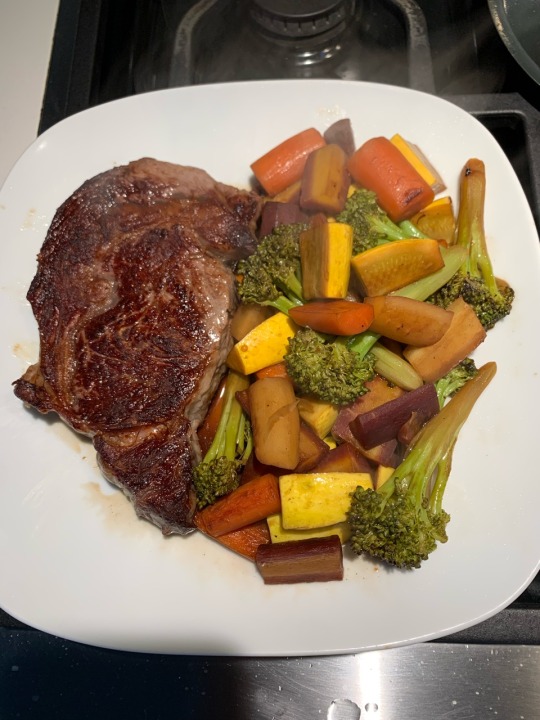
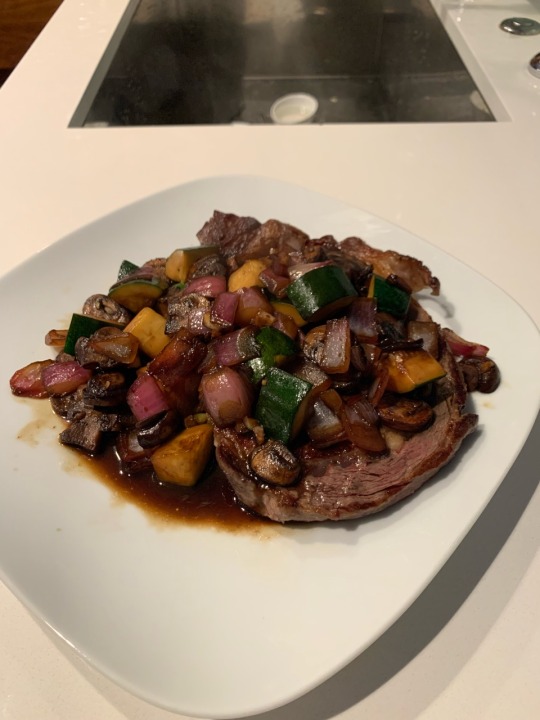
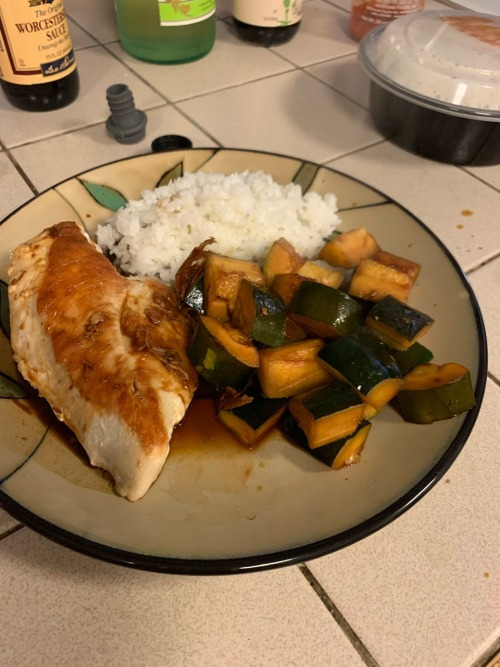
it's not super fancy, but it is easy, affordable, quick, and any flavors you want. Hope this helps some folks
Happy Cooking!
24K notes
·
View notes
Text
What Are Homemade Foods?
Homemade foods are meals and snacks prepared from scratch at home, often using fresh and minimally processed ingredients. Unlike store-bought or restaurant foods, homemade foods are crafted with care by individuals, families, or home cooks, allowing complete control over ingredients, cooking methods, and flavors.
They can range from everyday staples like soups, bread, and salads to more elaborate dishes that require time and effort, such as homemade pasta, curries, and baked goods. Tiffin service provides convenient, home-cooked meals delivered daily, often catering to busy professionals or students seeking nutritious, homemade food.
One of the primary benefits of homemade foods is the ability to customize ingredients to meet dietary preferences or restrictions, making them an excellent choice for those with food allergies, intolerances, or specific health goals. Indian tiffin service delivers authentic, home-cooked Indian meals featuring traditional spices and flavors, ideal for those craving homemade comfort food.
By cooking at home, individuals can avoid excessive sugars, unhealthy fats, and preservatives that are commonly found in pre-packaged or fast foods, leading to a healthier lifestyle overall. Homemade foods are often more nutritious and fresher, as they can incorporate seasonal produce and local ingredients.
What is desi? “Desi” refers to people, culture, and products originating from South Asia, particularly India, Pakistan, and Bangladesh, and their shared traditions.
Preparing food at home can provide health benefits as well as enjoyment and creativity. It allows for experimentation with flavors, cuisines, and cooking techniques, fostering a deeper connection to the food we eat.
A “tiffin service near me” offers convenient, home-cooked meals delivered daily, catering to busy individuals seeking nutritious, homemade food.

Cooking together as a family or with friends can also be a bonding experience, turning meal preparation into a shared, enjoyable activity. In essence, homemade foods not only nourish the body but also enrich our lives through tradition, creativity, and social connection.
Can you reheat chicken curry? Yes, you can reheat chicken curry. Ensure it’s heated thoroughly to an internal temperature of 165°F (74°C) to ensure safety.
Benefits of Homemade Food
Homemade food offers numerous benefits, both for health and well-being. Firstly, it allows complete control over ingredients, enabling people to choose fresh, natural, and minimally processed items. This reduces the intake of unhealthy additives, preservatives, and excess salt or sugar found in many pre-packaged or restaurant foods, making homemade meals a healthier option.
What is tiffin? A tiffin is a light meal or packed lunch, often homemade, popular in South Asian culture, and carried in stacked containers.
Additionally, homemade food can be tailored to individual dietary needs, whether for allergies, intolerances, or specific health goals. Cooking at home often promotes portion control and helps prevent overeating, contributing to better weight management.
Is a balti spicy? Depending on the ingredients used, a balti can range in spice level from mild to hot, but it typically has flavorful spices.
Beyond health benefits, preparing food at home can be a rewarding experience that fosters creativity and brings people together. Cooking with family or friends turns meal preparation into quality time, enhancing relationships. Homemade food also tends to be more budget-friendly, as ingredients can be bought in bulk, and leftovers can be used efficiently.
In essence, homemade food supports a healthier, more balanced, and connected lifestyle. What is the mildest curry? The mildest curry is typically a korma, known for its creamy, slightly sweet flavor with minimal heat. It often uses yogurt or coconut.
What spice makes Indian food hot?
What spice makes Indian food hot? Spices like chilli powder, black pepper, and green or red chillies contribute to its heat. The most common is red chilli powder, derived from ground dried chillies, which adds a vibrant colour and spicy kick. Another popular choice is black pepper, known for its sharp, warming heat.
Do Indians Eat Pork?
Do Indians Eat Pork? Yes, some Indians do eat pork, though it is not as common across the entire country. Pork consumption is primarily found in certain regions, such as in the northeastern states (like Nagaland and Mizoram) and among Christian and tribal communities.
In contrast, pork is generally avoided in many parts of India, particularly among Hindus and Muslims, due to religious dietary restrictions. Regional and cultural factors largely influence food choices.
Balti Vs Bhuna
Balti and Bhuna are both popular types of Indian curries, but they differ in cooking methods and flavor. A balti is a dish cooked in a wok-like pan with a strong, rich sauce. It often features a combination of spices and tender meat or vegetables. Is a bhuna spicy? Yes, a bhuna can be spicy, as it uses a blend of strong spices, but the heat level varies by preparation.
A bhuna, on the other hand, is a dry-fried curry in which spices are cooked in oil until they release their flavors, creating a thicker, more concentrated sauce.
Garam Masala Vs Tikka Masala
Garam masala and tikka masala are both essential to Indian cuisine but serve different purposes. Garam masala is a blend of ground spices, such as cinnamon, cumin, coriander, and cardamom, used to add warmth and depth to various dishes. Is tikka masala spicy? Tikka masala can be mildly spicy, depending on the recipe. While it features flavorful spices, its rich, creamy sauce usually tones down the heat.
Tikka masala, on the other hand, refers to a specific curry made with marinated meat, typically chicken, cooked in a rich, spiced tomato-based sauce. While garam masala is a seasoning, tikka masala is a dish.
#homemade foods#Home Cooked Food#Home Cooked Meal#food#food delivery#home cooked#homecooked meal#best meals#cooked foods#good home cooked meals
0 notes
Text

#moon#crescent moon#moon and stars#blue#food#sweet#dessert#delicious#cooking#baking#pastel#pastel aesthetic#sun#Aesthetic#cake#Wedding#wedding cake
12K notes
·
View notes
Note
Papyrus fucking up his cooking stim board? 🙏



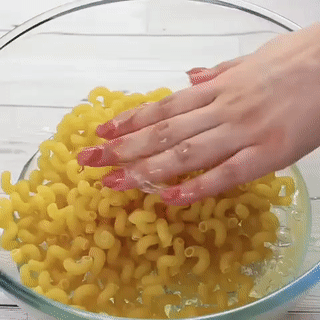




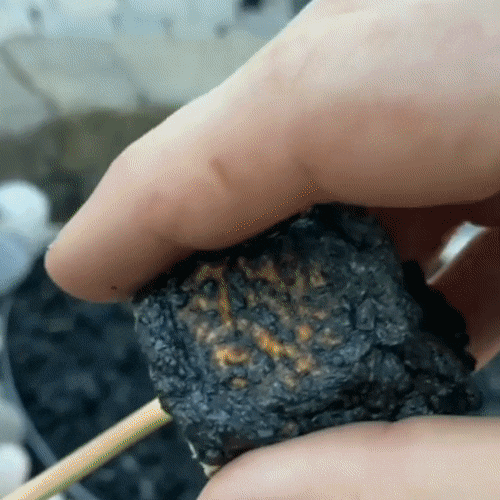
Papyrus fucking up his cooking stim board!!!
Ricky I'm so sorry this took so long. I could never find art for this and I didn't know what to do if I made my own but eventually I cranked this out. I drew that fire myself I tried to make it as Toby Fox as possible
x x x
x :) x
x x x
#undertale#stim board#undertale stim board#papyrus#papyrus undertale#the great papyrus#cursed stim#anti stim#joke stimboard#fire stim#explosion stim#food stim#pasta stim#macaroni#cake stim#betty crocker#pie stim#marshmallow stim#creme brulee#slime stim#tw fire#tw hands#tw food#tw explosion#tw slime#cooking stim#❤️joke stim#❤️requested stim#❤️undertale stim#❤️character stim
8K notes
·
View notes
Text
🫡
11K notes
·
View notes
Text
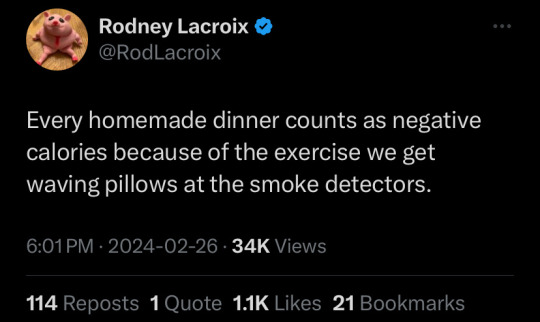
24K notes
·
View notes
Text
Dinner’s on me tonight babe. 😏

10K notes
·
View notes
Text

dragon meat, you, and me
#marcille donato#falin touden#farcille#dungeon meshi#delicious in dungeon#tw blood#tw body horror#tw gore#as a normal farcille fan this revival has been on my mind since i first read it and getting to watch it is like yippee!!#like messy revivals are everything - the consequences that will haunt u for the rest of the time they are alive#the initial hopeful moments where it all seemed well but quickly descend to That not being the case - losing not only the bit of evidence#evidence that your dream may work out but also someone you deeply care about in the process… marcille my Beloved#ofc wholly thruout the journey - at the forefront of it - getting falin back was the most crucial point but so wuickly :(( it was lost#on the other end its crazy to think about the compoments of falin now - human - dragon (dungeon) - marcille’s magic and desperation#the food the crew cooked (digested) - she is made of many parts!!#also i did not realize how medical it feels to draw smth like this. i dont usually explore the inner parts or use a lot of blood#in my work so rendering everything and looking up refs it felt quite magical (?)#ruporas art
16K notes
·
View notes
Text
#smash cheeseburgers#smash burgers#burgers#beef#meat#tiktok#tiktok food#brattylikestoeat#food#foodlr#food blog#video#foodie#cooking stim#stim cooking#savory stim#yummy#free palestine#free 🍉
23K notes
·
View notes
Text






#i will cook heart shaped food for you#positivity#spilled thoughts#spilled words#spilled writing#thoughts#writing#my thoughts#quotes#spilled ink#spilled poetry#artists on tumblr#art#my posts#posts on tumblr#love quote tumblr#love#heart shaped#photography#love couple#couple#romantic#literature
6K notes
·
View notes
Text
"Which spices go with which foods" lists are of limited value to me because, like, I have functioning taste buds. What I really need is a "spices that need to be added at the start of the cooking time in order to properly develop versus spices that need to be added in the last five minutes because extended heating fucks up the flavour profile" list – that shit is not intuitive.
35K notes
·
View notes
Text

Breakfast Platter
#breakfast platter#breakfast food#breakfast#sausage#breakfast sausage#fried egg#eggs#bacon#country potatoes#hash browns#toast#toya's tales#style#toyastales#toyas tales#brunch#munchies#eating#cooking#fried food#november#fall recipes#food photography#food porn#food pics#foodpics#foodporn#foodie#food#comfort food
5K notes
·
View notes